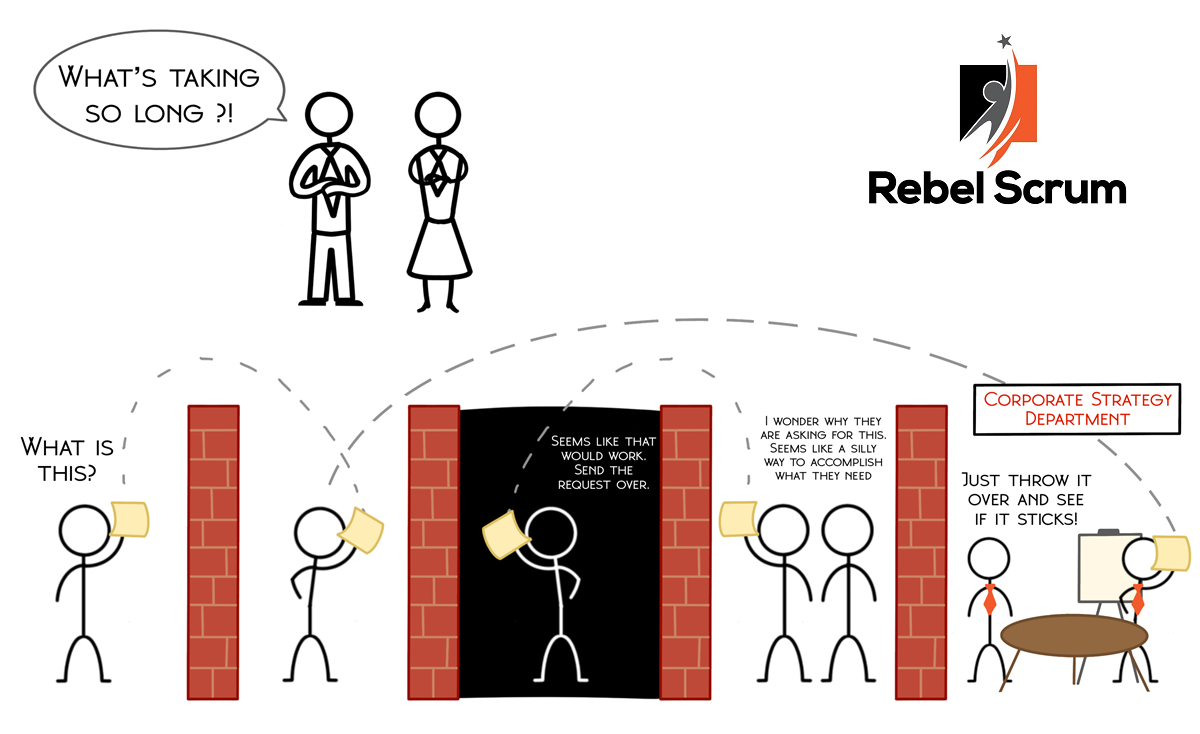For more than 40 years, business experts have emphasized the importance of efficiency, specialization, and keeping people busy. The idea was that if we optimize our processes we can deliver value sooner.
And for certain kinds of work, that approach works very well. But not necessarily for complex, creative work.
In complex work—like software development, marketing, human resources, or designing new products - there are few repeating tasks to optimize. That's because in creative work, we create a new outcome every time we approach a problem. As a result, what we need to be improving is communication and the ability for people to collaborate, regardless of their specialization. And yet - tragically - so many organizations are still focused on efficiency which means that rather than helping people work together, the organization is focused instead on putting up walls between people with different skills.

When teams are structured around specialties - developers over here data people over there - it’s easy to lose sight of the customer's needs. Each department focuses on doing its own part efficiently, but the real product emerges from how those parts fit together.
In creative work, that’s where the magic happens—in the collaboration between people with different expertise. Silos get in the way of that collaboration. They create walls where there should be conversation.
Now I am not necessarily talking about reporting structures. Who someone reports to doesn't have to have anything to do with what Scrum team that they are working on. What I am talking about is ensuring that Scrum teams have a mix of people with different skills working together to deliver value.
Scrum and Cross-Functional Teams
Scrum calls for cross-functional teams.
A Scrum Team has all the skills needed to deliver a usable, valuable product increment every Sprint. Developers with different skillsets (DBAs, Front-end Developers, Testers, etc.) working together side by side towards a shared goal. They learn together, inspect and adapt together, and deliver done product together.
Scrum helps teams collaborate by providing just enough - but not too much - structure to help teams focus on customer outcomes. The Product Owner helps the Scrum team focus on the Product Goal and provides a transparent list of what the Product Owner believes will add the most value to the product. This helps the team focus on the highest value work.
Each Scrum team typically consists of 10 or fewer people. When you have a product that needs three or more Scrum teams to deliver it, the answer isn't to silo them. Instead, you need a way for them to manage dependencies and improve communications. Nexus is a simple Scaling framework that extends - but doesn't replace - Scrum.
Nexus is the simplest scaling framework out there - and that's what makes it great. It helps teams manage dependencies and stay aligned without adding unnecessary complexity.
What teams don’t need are silos. Silos create barriers to communication. Nexus removes them. It helps multiple teams collaborate as one, focusing on delivering value together instead of optimizing their own separate pieces.
Scrum isn’t just a framework—it’s a mindset shift. It helps teams break down silos, focus on shared goals, and deliver value iteratively and incrementally. If you are trying to help your teams communicate and work together, don't add silos - add Nexus instead!
